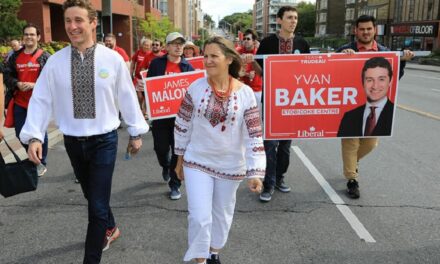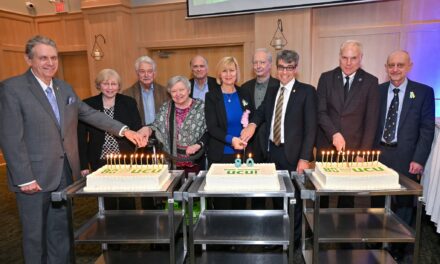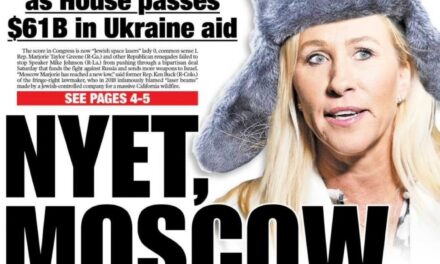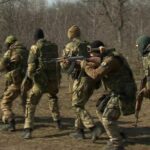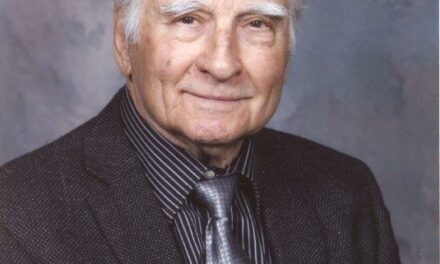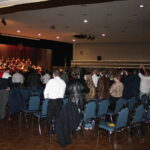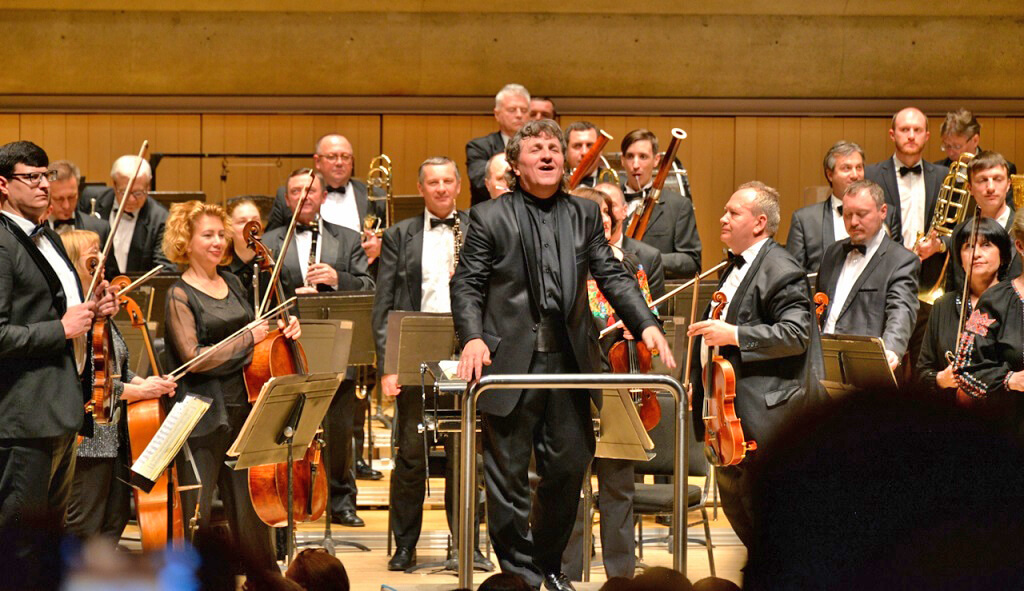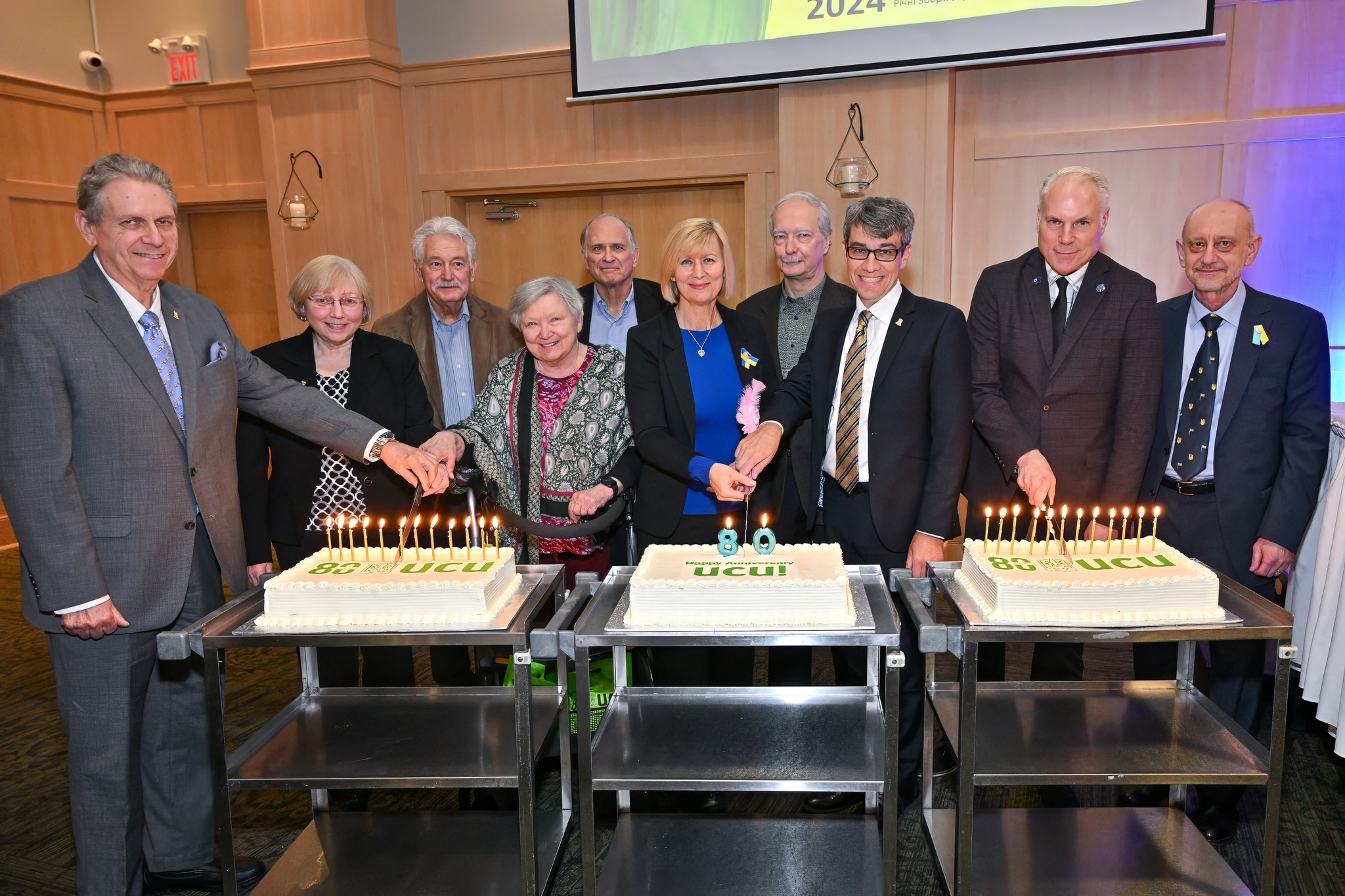Wasyl Sydorenko for New Pathway, Toronto.
Marshall McLuhan, the great Canadian philosopher, once said, “The medium is the message!” When the National Symphony Orchestra (NSO) of Ukraine performed in Toronto’s Roy Thomson Hall for the first time in Canada on February 13, 2017, the message was the orchestra. Indeed, the orchestra came, the orchestra played, and the orchestra conquered the stage of Roy Thomson Hall. Twenty years ago, Gary Kulesha, the Toronto Symphony Orchestra’s long-time composer-advisor opined that Ukraine had no musical culture worthy of the international concert stage. Indeed, Ukrainians have been described by the likes of Michael Ignatieff as peasants, ignorant of high culture, who would rather protest in the snow than see the Bolshoi Ballet on stage. Thanks to the Ihnatowycz and Temerty Family Foundations (even great orchestras need sponsors), the NSO was able to prove the critics wrong.
Of course, the medium of music carries its own message. What message did the concert program carry? Musically speaking—a very complex one. The program consisted of two Post-Soviet works by Yevhen Stankovych, his orchestral suite from the ballet “The Night before Christmas” (1992) and the “Violin Concerto № 2” (2006), as well as Petro Chaikovsky’s Late-Romantic “Symphony № 6, Pathetique” (1893). In her program notes, Olena Korchova, associate professor at the Chaikovsky National Academy of Music in Kyiv, explains Stankovych’s creative methodology—the composer combines the most effective Modernist techniques to develop a new musical language, which he refers to as New Universalism. This term, however, is commonly used to define contemporary globalist religious movements. Instead, Stankovych’s style should be described simply as Postmodern.
By the end of the 1960s, Modernism had run its self-destructive course in the West and was being replaced by Postmodernism. In the 1970s, Postmodernism entered the Soviet Union as a non-conformist movement in opposition to Socialist Realism. Stankovych together with composers Valentin Silvestrov and Myroslav Skoryk were the “enfants terribles” who rebelled against Socialist Realism. Nevertheless, Korchova points out that Stankovych’s uniqueness lies not in his New Universalism, but in his use of Ukrainian folk melodies. Soviet musicologists refer to this as Neofolklorism. There is, however, nothing unique or new in this approach. Starting with Mykola Lysenko, Ukrainian composers have spent an inordinate amount of time arranging and incorporating Ukrainian folksongs into works of so-called classical music. Were they trying to bridge the gap between high culture and the peasant world (or the proletariat)? Whether it was Socialist Realism, Neofolklorism, or Postmodernism, Soviet authorities tacitly encouraged Ukrainian composers to write folkish compositions (within reason) to limit their international success. On the other hand, Russian composers, unfettered by folkloric elements, have achieved far greater recognition in the West.
Korchova credits Stankovych with being the first Ukrainian composer to commemorate the three tragedies: Chornobyl (1986), Babyn Yar (1941-1943); and the famine of 1932-1933. And yet, the words “Holocaust” and “Holodomor,” which carry so much political meaning, are missing from the text. According to the program notes, Stankovych’s ballet suite is based fully on Ukrainian folklore: the Ukrainian folksong “Shchedryk” and the “kozachok”—a dance of power, energy and strength. Now, musically, “Shchedryk” (Carol of the Bells, 1916) is not a folksong but a classical composition by Mykola Leontovych. No wonder this outstanding choral work has become such an international hit. It truly is a classical (not folk) masterpiece! In the ballet, the “kozachok” is used to portray two drunken villagers from Mykola Hohol’s story of Christmas Eve shenanigans with the devil. Meanwhile, the violin concerto is thematically unified by musical motifs imitating the Carpathian “trembita” (a folk instrument) and Hutsul fiddlers. We are dangerously close to becoming the very peasants Ignatieff describes—phony Cossacks listening to the nasal whine of ethnic instruments. Such features are not likely to propel Ukrainian classical music onto the international concert stage. Mind you, the NSO musicians displayed remarkable skill performing these technically demanding works. Violinist Dima Tkachenko deserves credit for his editing of the concerto’s cadenzas and solo parts. And, conductor Volodymyr Sirenko ably showcased the exquisite artistry of the whole orchestra. None of the YouTube videos do the orchestra justice.
Chaikovsky’s name is always associated with a certain amount of controversy. Here, too, the question arose—is he a Russian or a Ukrainian composer? Some local experts flatly denied his Ukrainianness, but the conductor, interviewed on Ukrainian television, categorically defended Chaikovsky’s Ukrainian roots and strong association with Ukrainian culture. Even if Chaikovsky was not a Ukrainian nationalist, nevertheless, he was the only “Russian” composer who actively encouraged Lysenko throughout his life. And, who said that Ukrainian orchestras should only play the music of Ukrainian composers in front of Ukrainian audiences? The NSO’s performance of Chaikovsky’s “Pathetique” was unusual because of the 19th-century seating arrangement of the string section—the first and second violins sitting to the left and right of the conductor, respectively. Allegedly, Russian orchestral repertoire relies on the inherent stereophonic possibilities of this seating plan. If “the medium is the message,” then the NSO’s statement must be its unwavering loyalty to Russian tradition, despite the more than 80 recordings it has made on the Naxos and Marco Polo labels since 1991.
Following a standing ovation in Roy Thomson Hall, the NSO decided to further entertain the audience with two encores: Skoryk’s “Melodiya,” and Lysenko’s overture to his opera “Taras Bulba.” Both works were somewhat of a “non sequitur.” The “Melodiya” is particularly problematic because it is “Slavka Petryn’s Theme” from the Soviet film “Vysokyi Pereval” (The High Pass, 1981-1982). Who is Slavka Petryn and what is the movie about? Slavka is a Soviet agent hell-bent on bringing Communism to her Carpathian village after World War II. All she does is bring death and destruction unto herself, her family, and the village. But, through her “martyrdom” she cements the friendship of two “brotherly” peoples—the Russians and Ukrainians, together forever! Cynically, Skoryk allowed a “contrafactum” text to be added to this theme to create the song “Svicha” (The Candle, 2008) in memory of the victims of the Holodomor. Otherwise, the “Melodiya” has become a knee-jerk encore of most Ukrainian musicians today. And, Lysenko’s overture (arranged by Levko Revutsky et al) is more suited to a pops concert program than a Toronto Symphony Orchestra special event.
The Ukrainian Art Song Project was featured in a pre-concert performance of Lysenko’s song cycle based on poems by Heinrich Heine. The performers were Krisztina Szabó (mezzo-soprano), Russell Braun (baritone), and Albert Krywolt (piano). As always (one cannot say this often enough), the art songs were a sheer delight and the renditions—utterly fantastic. The Project never fails but to please! This enchanting part of the evening had its own set of program notes. Most of them were written by this author for the original CD album of Lysenko’s art songs. But, I must disown the introductory paragraph, which contained nothing but errors. (I was not involved in its writing.) Heine’s date of birth, 1797, was given as 1707! Lysenko was born in 1842. It was in 1867-1869, not the early 1850s, that he studied at the Leipzig Conservatory. The song cycle was written much later, in 1893, at the suggestion of poet Lesia Ukrainka. And, all of the songs are translations of Heine by Ukrainka and Maksym Slavynsky, including “Koly rozluchaiut’sia dvoie” (When two must part).
The appearance of the National Symphony Orchestra of Ukraine on the concert stage of Roy Thomson Hall in Toronto is an important step in the development of cultural relations between Canada and Ukraine, but the message being expressed is still uncertain and confused. Hopefully, when the NSO returns to Toronto sometime in the future, the message will be stronger and clearer. Meanwhile, the NSO will perform 44 times in North America during its present tour of the continent. The overall message it brings to audiences is a positive one—Ukraine exists (despite all the Russian propaganda), the NSO is our cultural ambassador (like Oleksander Koshyts’ choir in 1922-1924), and Ukrainian music is valid in a Post-Soviet, Post-Colonial, Post-Postmodern world.
Share on Social Media








